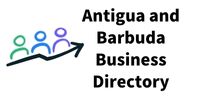The internet is our primary source of information, communication, and entertainment. But we’ve all experienced the frustration of navigating mobile-unfriendly pages, squinting at hard-to-read fonts, and the irritation at slow-loading websites.
While these issues are slightly inconvenient to us, for people with disabilities, these problems can make the internet completely inaccessible.
What Is Web Accessibility?
According to the Centers for Disease Control (CDC), 1 in 4 adults (26%) in the United States have some type of disability. Web accessibility is about making a website accessible to everyone by creating web design, tools, and content that everyone can use – regardless of ability.
Why Is Web Accessibility Important?
Besides making the internet more inclusive for everyone, web twitter database accessibility gives people with disabilities equal access to a digital platform. Accessibility also provides a better user experience which improves your website’s Search Engine Optimization (SEO) efforts. This, in turn, helps your website rank higher in search engine results pages (SERPs) which increases your audience reach. Not only is web accessibility one of the best practices for web design, but it also helps businesses expand their market reach and improve customer satisfaction.
Types of Disability
Let’s look at the types of disabilities that affect the accessibility of your website – and their corresponding solutions:
Visual – includes blindness, low vision, and color blindness.
Solution: Screen magnifying software or screen readers that read aloud digital text and describe website images.
Hearing – includes deafness and hearing impairments.
Solution: The audio content on the website should include subtitles or a transcript, so it’s easier to understand and interact with web content.
Cognitive – includes attention and learning disabilities.
Solution: Use simple language, consistent layout, and marketing resources refer navigation, and create video content.
Motor – includes limited fine motor control, muscle slowness, and difficulty or inability to use hands, making it challenging to use mice or trackpads.
Solution: Use customized devices like head pointers, mouth sticks, or speech recognition.
Website Accessibility Checklist
The Web Content Accessibility Guidelines (WCAG) are international guidelines for creating accessible websites. The WCAG (currently WCAG 2.0) provides a common standard for web content accessibility.
While it’s mainly intended for developers, designers, and uab directory accessibility experts, the WCAG documents explain how to make a website more accessible. The guidelines are organized under four principles: perceivable, operable, understandable, and robust, and there are three levels of conformance: A-minimal, AA-satisfying, or AAA-excellent.
